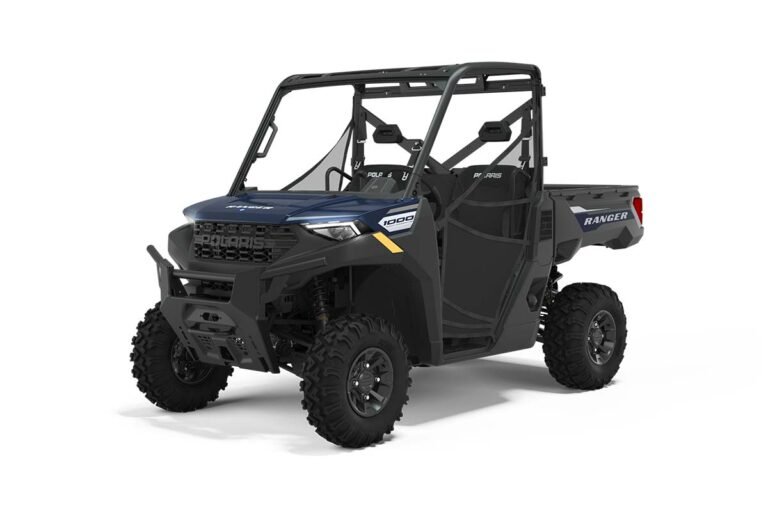How to Replace Brake Pressure Switch on Polaris Ranger: Quick Guide
To replace the brake pressure switch on a Polaris Ranger, locate the switch near the master cylinder. Disconnect the wires, unscrew the switch, and install the new one securely.
Are you facing issues with the brake pressure switch on your Polaris Ranger? If you’re hearing unusual noises or experiencing brake malfunctions, it might be time to replace the pressure switch. In this guide, we’ll walk you through the simple steps to replace the brake pressure switch on your Polaris Ranger.
By following these instructions, you’ll be back on the road with properly functioning brakes in no time. Let’s dive into the process of replacing the brake pressure switch on your Polaris Ranger.
Brake Pressure Switch Issues
The brake pressure switch is an essential component in the braking system of your Polaris Ranger. It controls the brake lights and ensures that they turn on when you press the brake pedal.
When the switch fails, it can cause a range of issues, including failed brake lights and problems with the braking system. In this post, we will discuss the common signs of a failing brake pressure switch, the consequences of not replacing a faulty switch, and how to replace it.
Common Signs Of A Failing Brake Pressure Switch
Several signs indicate a failing brake pressure switch. These include:
- Brake lights do not turn on when you press the brake pedal
- Brake lights stay on even when you are not pressing the brake pedal
- The brake pedal feels spongy or soft
- The ABS warning light on the dashboard comes on
- The brake system warning light on the dashboard comes on
If you notice any of these signs, it’s essential to replace the brake pressure switch as soon as possible.

Consequences Of Not Replacing A Faulty Switch
If you ignore the signs of a failing brake pressure switch and do not replace it, you may experience several consequences. These include:
- Failed brake lights, which can cause accidents and lead to traffic tickets
- Problems with the braking system, which can lead to reduced stopping power and increased stopping distance
- Increased wear and tear on other brake system components, such as brake pads and rotors
- Potential damage to the ABS system, which can be costly to repair
Replacing a faulty brake pressure switch is a simple and affordable solution that can prevent these consequences and ensure your Polaris Ranger’s braking system is working correctly.
In the next section, we will discuss how to replace the brake pressure switch on your Polaris Ranger.
Tools And Materials Needed
To replace the brake pressure switch on a Polaris Ranger, you will need a set of wrenches, a new brake pressure switch, safety gloves, safety goggles, and a drain pan. These tools and materials are essential for a successful switch replacement.
To replace the brake pressure switch on your Polaris Ranger, you will need a few essential tools. Having these tools handy will make the process smoother and ensure a successful replacement.
Here is a list of tools you will need:
1. Wrench set: A set of wrenches will be necessary to remove the old switch and install the new one. Make sure you have both metric and standard sizes to cover all the bolts and nuts.
2. Socket set: A socket set with various sizes will be helpful in accessing and removing the switch, especially if it is located in a tight spot.
3. Screwdriver set: Having a set of screwdrivers, including both Phillips and flathead, will come in handy for removing any screws or clips that may be holding the switch in place.
4. Pliers: Pliers will be useful for gripping and maneuvering any small components during the replacement process.
5. Safety gloves and goggles: It’s always important to prioritize your safety. Wear gloves to protect your hands from any sharp edges or debris, and goggles to shield your eyes from any potential hazards.
6. Brake fluid: Depending on the specific model of your Polaris Ranger, you may need to have some brake fluid on hand to top up the system after the replacement.
Choosing The Right Replacement Switch
Selecting the correct replacement brake pressure switch is crucial to ensure compatibility and optimal performance. Here are a few key factors to consider when choosing the right replacement switch:
1. Compatibility: Check the specifications of the switch to ensure it is compatible with your Polaris Ranger’s make, model, and year. It’s important to match the switch with the specific requirements of your vehicle.
2. Quality: Opt for a high-quality replacement switch to ensure durability and longevity. Look for switches made from reliable materials that can withstand the demands of your Polaris Ranger’s braking system.
3. OEM or aftermarket: Decide whether you prefer an original equipment manufacturer (OEM) switch or an aftermarket option. OEM switches are designed specifically for your vehicle and may provide a more precise fit, while aftermarket switches can sometimes offer additional features or cost savings.
4. Reviews and recommendations: Before purchasing a replacement switch, read customer reviews and seek recommendations from trusted sources. Hearing about other customers’ experiences can help you make an informed decision.
Remember, it’s always recommended to consult the owner’s manual or seek professional assistance if you are unsure about replacing the brake pressure switch on your Polaris Ranger.
Replace the brake pressure switch on your Polaris Ranger
Follow these preparatory steps to replace the brake pressure switch on your Polaris Ranger. Begin by locating the switch and disconnecting the electrical connectors. Then, remove any surrounding components that may obstruct access to the switch. Finally, carefully uninstall the old switch and replace it with a new one, making sure all connections are secure.
Safety Precautions Before Starting
Before replacing the brake pressure switch on your Polaris Ranger, it’s crucial to prioritize safety. Always wear protective gear like gloves and safety goggles to shield yourself from potential harm.
Vehicle Preparation
Prior to starting the replacement process, ensure that the Polaris Ranger is parked on a level surface and the engine is turned off. Additionally, engage the parking brake to prevent any accidental movement of the vehicle.
Next, disconnect the negative battery cable to avoid any electrical mishaps during the replacement procedure.
Locating The Brake Pressure Switch
If your Polaris Ranger is having brake problems, then replacing the brake pressure switch could be the solution you need. The brake pressure switch is responsible for activating the brake lights when you press the brake pedal. In this guide, we will show you how to locate and replace the brake pressure switch on your Polaris Ranger.
Accessing The Switch Location
The first step in replacing the brake pressure switch on your Polaris Ranger is to access its location. The brake pressure switch is located on the brake master cylinder. To access it, follow these steps:
- Remove the driver’s seat to gain access to the master cylinder.
- Locate the brake master cylinder on the driver’s side of the vehicle.
- Remove the electrical connector from the brake pressure switch.
Identifying The Brake Pressure Switch
Before you can replace the brake pressure switch on your Polaris Ranger, you need to identify it. Here are the steps:
- Locate the brake pressure switch on the brake master cylinder. It is a small cylindrical component with wires connected to it.
- Inspect the switch for any signs of damage or wear. If the switch appears to be damaged, it will need to be replaced.
- Take note of the orientation of the switch and the position of the wires to ensure you install the new switch correctly.
Now that you know how to locate and identify the brake pressure switch on your Polaris Ranger, you can replace it and get your brakes working properly again. Remember to always follow safety precautions when working on your vehicle, and if you are unsure about any steps, consult a professional mechanic.
Removing The Old Brake Pressure Switch
To replace the brake pressure switch on a Polaris Ranger, the first step is to remove the old one. Begin by locating the switch, which is typically located near the master cylinder. Once you’ve found it, use a wrench to carefully disconnect the wiring harness and remove the switch from the vehicle.
Step-by-step Removal Process
To replace the brake pressure switch on your Polaris Ranger, you will need to begin by removing the old switch. This step-by-step guide will walk you through the process, ensuring a smooth and successful replacement.
1. Locate the brake pressure switch: First, identify the location of the old brake pressure switch on your Polaris Ranger. It is typically located near the brake pedal assembly.
2. Disconnect the battery: Before starting any electrical work, it is crucial to disconnect the battery to prevent any potential shocks or short circuits. Locate the battery and disconnect the negative terminal.
3. Remove the switch wiring: Carefully detach the wiring connectors from the old brake pressure switch. Take note of their positions or take a picture for reference during reinstallation.
4. Loosen the switch mounting: Using an appropriate tool, loosen the mounting bolt or screw that secures the switch to the brake pedal assembly. Keep track of any washers or spacers that may be present.
5. Remove the old switch: Once the mounting bolt is removed, gently pull the old brake pressure switch away from the brake pedal assembly. Take care not to damage any surrounding components.
6. Inspect the switch and connections: Take a moment to inspect the old switch for any signs of damage or wear. Additionally, check the wiring connections for any loose or frayed wires that may need attention.
7. Dispose of the old switch responsibly: Properly dispose of the old brake pressure switch according to local regulations. Consider recycling options to minimize environmental impact.
Handling Connections And Wirings
When handling connections and wirings during the removal process, it is essential to exercise caution and follow these steps to ensure a safe and successful replacement.
1. Inspect the wiring connectors: Before connecting the new brake pressure switch, carefully inspect the wiring connectors for any signs of damage or corrosion. Clean or replace them as necessary.
2. Connect the new switch: Align the new brake pressure switch with the mounting hole on the brake pedal assembly. Secure it in place by tightening the mounting bolt or screw. Refer to the picture or notes taken during the removal process to ensure proper positioning.
3. Reconnect the wiring: Attach the wiring connectors to the corresponding terminals on the new brake pressure switch. Ensure a secure and snug connection, avoiding any loose or exposed wires.
4. Reconnect the battery: Once all the connections are in place, reconnect the negative terminal of the battery. Double-check that everything is properly secured and insulated to prevent any electrical issues.
5. Test the new switch: Before using your Polaris Ranger, test the new brake pressure switch to ensure it is functioning correctly. Depress the brake pedal and observe if the brake lights illuminate as they should.
By following these step-by-step instructions and handling the connections and wirings with care, you can successfully remove the old brake pressure switch on your Polaris Ranger and prepare for the installation of the new one.
Installing The New Brake Pressure Switch
Installing the new brake pressure switch on your Polaris Ranger is a straightforward process that ensures the proper functioning of your vehicle’s braking system. Following these steps will help you to safely and effectively replace the brake pressure switch.
Mounting The New Switch
Start by mounting the new brake pressure switch onto the designated location on your Polaris Ranger. Ensure that it is securely fastened to prevent any potential issues while in use.
Reconnecting Wires And Ensuring Proper Fit
After mounting the new switch, reconnect the wires to their respective terminals. Take care to ensure that each wire is properly connected and that the switch fits snugly in place.
Testing The New Brake Pressure Switch
After replacing the brake pressure switch on your Polaris Ranger, it is crucial to test the functionality to ensure proper operation. Here’s a step-by-step guide on how to test the new brake pressure switch:
Procedure For Testing Functionality
- Locate the new brake pressure switch installed in your Polaris Ranger.
- Turn on the ignition key to power up the system.
- Press the brake pedal to activate the brake pressure switch.
- Observe the brake lights to ensure they illuminate when the pedal is pressed.
- Release the brake pedal and check if the brake lights turn off.
- Repeat the process a few times to confirm consistent functionality.
Troubleshooting Common Issues
- If the brake lights do not illuminate, check the brake pressure switch connection.
- Ensure the switch is properly installed and securely connected.
- Inspect the wiring for any damage or loose connections.
- If the issue persists, consider consulting a professional for further assistance.
Final Steps And Cleanup
After replacing the brake pressure switch on your Polaris Ranger, the final steps involve double-checking all connections and ensuring everything is secure. Clean up any spilled fluids or debris to prevent future issues and maintain safety.
Reassembling Removed Parts
After replacing the brake pressure switch, begin reassembling the parts carefully.
Disposal Of The Old Switch
Dispose of the old switch following proper environmental regulations.
Now, let’s move on to the final steps and cleanup process.
After replacing the brake pressure switch on your Polaris Ranger, it’s time to reassemble the removed parts. Make sure to do this step with precision to ensure everything fits back correctly.
Before wrapping up, don’t forget to properly dispose of the old switch. Ensure it is discarded following the necessary environmental guidelines to avoid any harm.
Maintenance Tips For Brake System Longevity
To ensure the longevity of your brake system, follow these maintenance tips. Today, we’ll guide you through the process of replacing the brake pressure switch on your Polaris Ranger. With these steps, you’ll keep your brakes in top condition for optimal performance and safety on the road.
Regular Inspection Intervals
Inspect brake pressure switch every 6 months for wear.
Best Practices For Brake System Care
Use only manufacturer-approved brake fluid for replacements.
Conclusion
Replacing the brake pressure switch on your Polaris Ranger is a manageable task. By following the outlined steps, you can ensure the safety and efficiency of your vehicle’s braking system. With the right tools and attention to detail, this maintenance can be completed with confidence.






